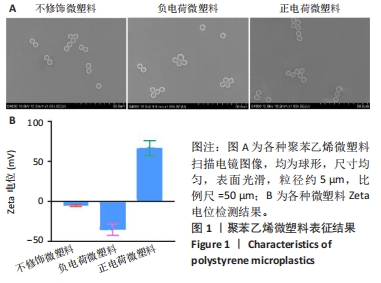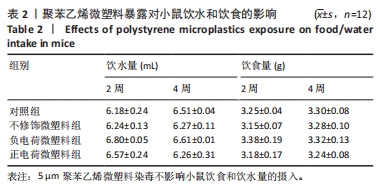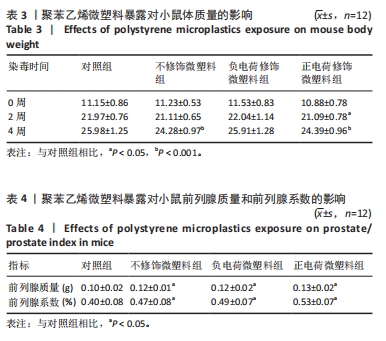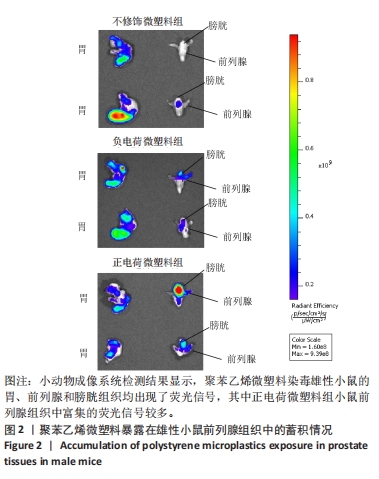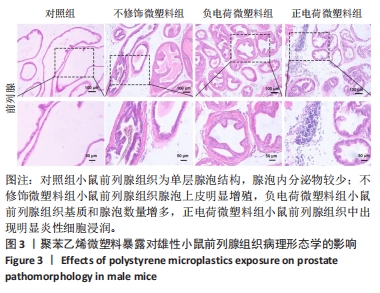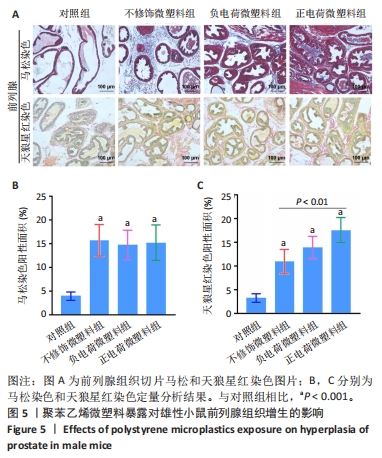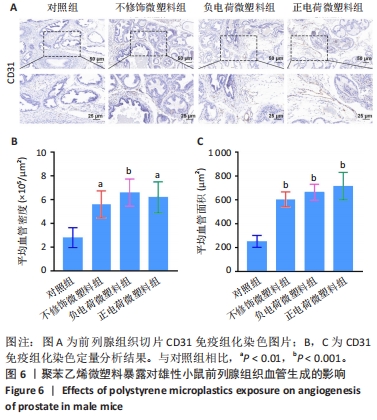[1] JAMBECK JR, GEYER R, WILCOX C, et al. Marine pollution. Plastic waste inputs from land into the ocean. Science. 2015;347(6223):768-771.
[2] SCHMID C, COZZARINI L, ZAMBELLO E. Microplastic’s story. Mar Pollut Bull. 2021;162:111820.
[3] BOWLEY J, BAKER-AUSTIN C, PORTER A, et al. Oceanic Hitchhikers-Assessing Pathogen Risks from Marine Microplastic. Trends Microbiol. 2021;29(2):107-116.
[4] ZEB A, LIU W, ALI N, et al. Microplastic pollution in terrestrial ecosystems: Global implications and sustainable solutions. J Hazard Mater. 2024;461:132636.
[5] THOMPSON RC, OLSEN Y, MITCHELL RP, et al. Lost at sea: where is all the plastic? Science. 2004;304(5672):838.
[6] WALLER CL, GRIFFITHS HJ, WALUDA CM, et al. Microplastics in the Antarctic marine system: An emerging area of research. Sci Total Environ. 2017;598:220-227.
[7] MOOS NV, BURKHARDT-HOLM P, KOHLER A. Uptake and effects of microplastics on cells and tissue of the blue mussel Mytilus edulis L. after an experimental exposure. Environ Sci Technol. 2012;46(20): 11327-11335.
[8] WATTS AJ, LEWIS C, GOODHEAD RM, et al. Uptake and retention of microplastics by the shore crab Carcinus maenas. Environ Sci Technol. 2014;48(15):8823-8830.
[9] BROWNE MA, DISSANAYAKE A, GALLOWAY TS, et al. Ingested microscopic plastic translocates to the circulatory system of the mussel, Mytilus edulis (L). Environ Sci Technol. 2008;42(13):5026-5031.
[10] BHAGAT J, ZANG L, NISHIMURA N, et al. Zebrafish: An emerging model to study microplastic and nanoplastic toxicity. Sci Total Environ. 2020;728:138707.
[11] XU X, ZHANG L, XUE Y, et al. Microplastic pollution characteristic in surface water and freshwater fish of Gehu Lake, China. Environ Sci Pollut Res Int. 2021;28(47):67203-67213.
[12] HARLEY-NYANG D, MEMON FA, BAQUERO AO, et al. Variation in microplastic concentration, characteristics and distribution in sewage sludge & biosolids around the world. Sci Total Environ. 2023; 891:164068.
[13] ZHAO B, REHATI P, YANG Z, et al. The potential toxicity of microplastics on human health. Sci Total Environ. 2024;912:168946.
[14] LESLIE HA, VELZEN MJM, BRANDSMA SH, et al. Discovery and quantification of plastic particle pollution in human blood. Environ Int. 2022;163:107199.
[15] MAZZILLI R, RUCCI C, VAIARELLI A, et al. Male factor infertility and assisted reproductive technologies: indications, minimum access criteria and outcomes. J Endocrinol Invest. 2023;46(6):1079-1085.
[16] WARREN BD, AHN SH, BRITTAIN KS, et al. Multiple Lesions Contribute to Infertility in Males Lacking Autoimmune Regulator. Am J Pathol. 2021;191(9):1592-1609.
[17] JIN H, MA T, SHA X, et al. Polystyrene microplastics induced male reproductive toxicity in mice. J Hazard Mater. 2021;401:123430.
[18] HOU B, WANG F, LIU T, et al. Reproductive toxicity of polystyrene microplastics: In vivo experimental study on testicular toxicity in mice. J Hazard Mater. 2021;405:124028.
[19] VERZE P, CAI T, LORENZETTI S. The role of the prostate in male fertility, health and disease. Nat Rev Urol. 2016;13(7):379-386.
[20] DEMIRELLI E, TEPE Y, OGUZ U, et al. The first reported values of microplastics in prostate. BMC Urol. 2024;24(1):106.
[21] GAO D, ZHANG C, GUO H, et al. Low-dose polystyrene microplastics exposure impairs fertility in male mice with high-fat diet-induced obesity by affecting prostate function. Environ Pollut. 2024;346: 123567.
[22] YAN J, PAN Y, HE J, et al. Toxic vascular effects of polystyrene microplastic exposure. Sci Total Environ. 2023;905:167215.
[23] LI N, YANG H, DONG Y, et al. Prevalence and implications of microplastic contaminants in general human seminal fluid: A Raman spectroscopic study. Sci Total Environ. 2024;937:173522.
[24] DANSO IK, WOO JH, BAEK SH, et al. Pulmonary toxicity assessment of polypropylene, polystyrene, and polyethylene microplastic fragments in mice. Toxicol Res. 2024;40(2):313-323.
[25] YANG Y, YANG J, WU WM, et al. Biodegradation and Mineralization of Polystyrene by Plastic-Eating Mealworms: Part 2. Role of Gut Microorganisms. Environ Sci Technol. 2015;49(20):12087-12093.
[26] SIDDIQUI SA, SINGH S, BAHMID NA, et al. Polystyrene microplastic particles in the food chain: Characteristics and toxicity - A review. Sci Total Environ. 2023;892:164531.
[27] LIU Z, ZHUAN Q, ZHANG L, et al. Polystyrene microplastics induced female reproductive toxicity in mice. J Hazard Mater. 2022;424(Pt C): 127629.
[28] SUN XD, YUAN XZ, JIA Y, et al. Differentially charged nanoplastics demonstrate distinct accumulation in Arabidopsis thaliana. Nat Nanotechnol. 2020;15(9):755-760.
[29] ZHU K, JIA H, JIANG W, et al. The First Observation of the Formation of Persistent Aminoxyl Radicals and Reactive Nitrogen Species on Photoirradiated Nitrogen-Containing Microplastics. Environ Sci Technol. 2022;56(2):779-789.
[30] LOOS C, SYROVETS T, MUSYANOVYCH A, et al. Functionalized polystyrene nanoparticles as a platform for studying bio-nano interactions. Beilstein J Nanotechnol. 2014;5:2403-2412.
[31] PIRONTI C, NOTARSTEFANO V, RICCIARDI M, et al. First Evidence of Microplastics in Human Urine, a Preliminary Study of Intake in the Human Body. Toxics. 2022;11(1):40.
[32] VETHAAK AD, LEGLER J. Microplastics and human health. Science. 2021;371(6530):672-674.
[33] XU D, MA Y, HAN X, et al. Systematic toxicity evaluation of polystyrene nanoplastics on mice and molecular mechanism investigation about their internalization into Caco-2 cells. J Hazard Mater. 2021;417: 126092.
[34] KANG H, HUANG D, ZHANG W, et al. Inhaled polystyrene microplastics impaired lung function through pulmonary flora/TLR4-mediated iron homeostasis imbalance. Sci Total Environ. 2024;946:174300.
[35] YIN K, WANG D, ZHANG Y, et al. Polystyrene microplastics promote liver inflammation by inducing the formation of macrophages extracellular traps. J Hazard Mater. 2023;452:131236.
[36] FU T, SULLIVAN DP, GONZALEZ AM, et al. Mechanotransduction via endothelial adhesion molecule CD31 initiates transmigration and reveals a role for VEGFR2 in diapedesis. Immunity. 2023;56(10):2311-2324 e2316.
[37] SONG S, ZHANG G, CHEN X, et al. HIF-1alpha increases the osteogenic capacity of ADSCs by coupling angiogenesis and osteogenesis via the HIF-1alpha/VEGF/AKT/mTOR signaling pathway. J Nanobiotechnology. 2023;21(1):257.
[38] JIN H, YAN M, PAN C, et al. Chronic exposure to polystyrene microplastics induced male reproductive toxicity and decreased testosterone levels via the LH-mediated LHR/cAMP/PKA/StAR pathway. Part Fibre Toxicol. 2022;19(1):13.
[39] XIE X, DENG T, DUAN J, et al. Exposure to polystyrene microplastics causes reproductive toxicity through oxidative stress and activation of the p38 MAPK signaling pathway. Ecotoxicol Environ Saf. 2020;190: 110133.
[40] XU D, MA Y, PENG C, et al. Differently surface-labeled polystyrene nanoplastics at an environmentally relevant concentration induced Crohn’s ileitis-like features via triggering intestinal epithelial cell necroptosis. Environ Int. 2023;176:107968.
[41] PAN C, CHEN Y, XU T, et al. Chronic exposure to microcystin-leucine-arginine promoted proliferation of prostate epithelial cells resulting in benign prostatic hyperplasia. Environ Pollut. 2018;242(Pt B):1535-1545.
[42] WANG K, HUANG D, ZHOU P, et al. Bisphenol A exposure triggers the malignant transformation of prostatic hyperplasia in beagle dogs via cfa-miR-204/KRAS axis. Ecotoxicol Environ Saf. 2022;235:113430.
[43] HALIMU G, ZHANG Q, LIU L, et al. Toxic effects of nanoplastics with different sizes and surface charges on epithelial-to-mesenchymal transition in A549 cells and the potential toxicological mechanism. J Hazard Mater. 2022;430:128485.
[44] GOODMAN CM, MCCUSKER CD, YILMAZ T, et al. Toxicity of gold nanoparticles functionalized with cationic and anionic side chains. Bioconjug Chem. 2004;15(4):897-900.
[45] LI Y, XU M, ZHANG Z, et al. In vitro study on the toxicity of nanoplastics with different charges to murine splenic lymphocytes. J Hazard Mater. 2022;424(Pt B):127508.
[46] PAN C, WU Y, HU S, et al. Polystyrene microplastics arrest skeletal growth in puberty through accelerating osteoblast senescence. Environ Pollut. 2023;322:121217.
[47] CHUGHTAI B, FORDE JC, THOMAS DD, et al. Benign prostatic hyperplasia. Nat Rev Dis Primers. 2016;2:16031.
[48] AFIFY H, ABO-YOUSSEF AM, ABDEL-RAHMAN HM, et al. The modulatory effects of cinnamaldehyde on uric acid level and IL-6/JAK1/STAT3 signaling as a promising therapeutic strategy against benign prostatic hyperplasia. Toxicol Appl Pharmacol. 2020;402:115122.
[49] LIEDTKE V, STOCKLE M, JUNKER K, et al. Benign prostatic hyperplasia - A novel autoimmune disease with a potential therapy consequence? Autoimmun Rev. 2024;23(3):103511.
[50] BLOOM SI, ISLAM MT, LESNIEWSKI LA, et al. Mechanisms and consequences of endothelial cell senescence. Nat Rev Cardiol. 2023; 20(1):38-51.
[51] TRUJILLO-ROJAS L, FERNANDEZ-NOVELL JM, BLANCO-PRIETO O, et al. The onset of age-related benign prostatic hyperplasia is concomitant with increased serum and prostatic expression of VEGF in rats: Potential role of VEGF as a marker for early prostatic alterations. Theriogenology. 2022;183:69-78.
[52] KIM EY, JIN BR, CHUNG TW, et al. 6-sialyllactose ameliorates dihydrotestosterone-induced benign prostatic hyperplasia through suppressing VEGF-mediated angiogenesis. BMB Rep. 2019; 52(9):560-565.
[53] WU X, GU Y, LI L. The anti-hyperplasia, anti-oxidative and anti-inflammatory properties of Qing Ye Dan and swertiamarin in testosterone-induced benign prostatic hyperplasia in rats. Toxicol Lett. 2017;265:9-16.
|

